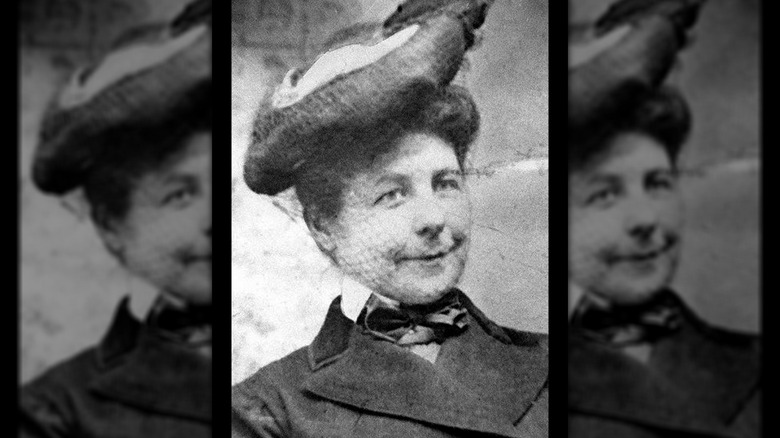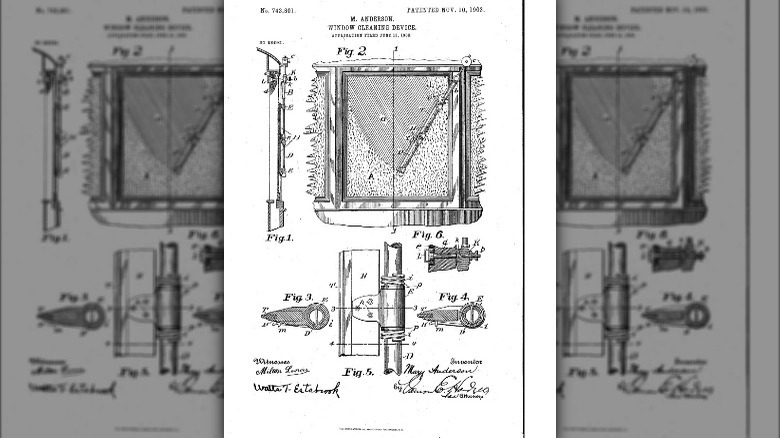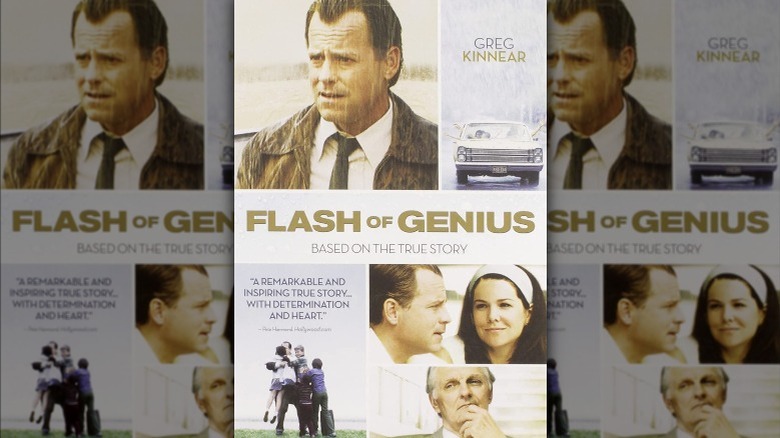How Robert Kearns Got Credit For Mary Anderson's Work
We may receive a commission on purchases made from links.
We may not give much thought to the little inventions that make our daily lives a whole lot easier. However, for every modern convenience, there's someone who dedicated themself to solve an irksome problem. The can opener, refrigeration, windshield wipers — life would be vastly different without innovations like these. And while it was uncommon of the era, it wasn't a man, but a woman who first saw the need for windshield wipers and executed a solution.
In the early 1900s, Mary Anderson (1856 — 1953), an unmarried entrepreneur in her 30s, was visiting New York City from her home state of Alabama. She couldn't believe how difficult it was for her driver to see out the windshield in the sleet and snow. He had to continually stop the car, get out, and wipe off the glass. She knew there had to be a better way. When returning home, she followed her intuition and drew up a sketch of a wiper made of wood and rubber that could be operated from inside a vehicle. On June 18, 1903, Anderson filed for a patent for her invention (via NPR). Later that year, she was granted patent number 743,801 from the United States Patent Office. Unfortunately, her invention didn't take off.
Mary Anderson's idea was rejected
Companies didn't see much of a need for Anderson's invention. Cars were still relatively new at the time. Henry Ford's Model T wouldn't be released until 1908 (via Investor's Business Daily). Ultimately, the product was written off as pointless. "The story of the missed chance is almost as big as the invention itself," said Sara Scott Wingo, Anderson's great-great niece.
The world wasn't ready for Anderson's creativity and progressive thinking. A rejection letter dated June 20, 1905, from Canadian company Dinning & Eckenstein read, "We regret to state we do not consider it to be of such commercial value as would warrant our undertaking its sale." Critics also claimed Anderson's idea would be too much of a distraction to drivers and ultimately a safety hazard (via History). Her genius patent expired in 1915. However, in 1922, Cadillac started to make and sell cars with, you guessed it, windshield wipers, per Investor's Business Daily.
So, why is it that a man named Robert Kearns would later receive credit for the invention of the windshield wiper? His idea was actually a slight variation on Anderson's windshield wiper, but it certainly seems that Anderson did the bulk of the work on this one.
Robert Kearns invented the intermittent windshield wiper
In 1963, Robert Kearns was driving through Detroit in the rain and was having difficulty seeing through the windshield, whose wipers only had two settings at the time: slow and fast. Kearns had suffered an injury nearly a decade earlier on his wedding night when a champagne cork hit his eye and left his vision impaired (via The New Yorker). It was on this stormy night that inspiration hit him. He thought the wipers could instead move intermittently, at the pace in which humans blink. This would be less distracting and still clear the rain.
Kearns received patents for his design in 1967, and much like Anderson, he didn't have success in selling the idea to motor companies (via The New York Times). Yet again, large corporations stole the invention from the inventor. In 1978, Kearns sued the Ford Motor Company for patent infringement. He did the same in 1982 with Chrysler for not honoring his patent. Kearns was awarded millions for the infringement, and consequently went on to be the name most associated with the invention of the windshield wiper. The 2008 film "Flash of Genius" tells the story of Robert Kearns.
Mary Anderson was never given any compensation for her invention of the windshield wiper. But, in 2011, she was inducted into the National Inventors Hall of Fame. It may be too little, too late, but hopefully her legacy will inspire young female inventors who may not initially be recognized for their brilliance.


